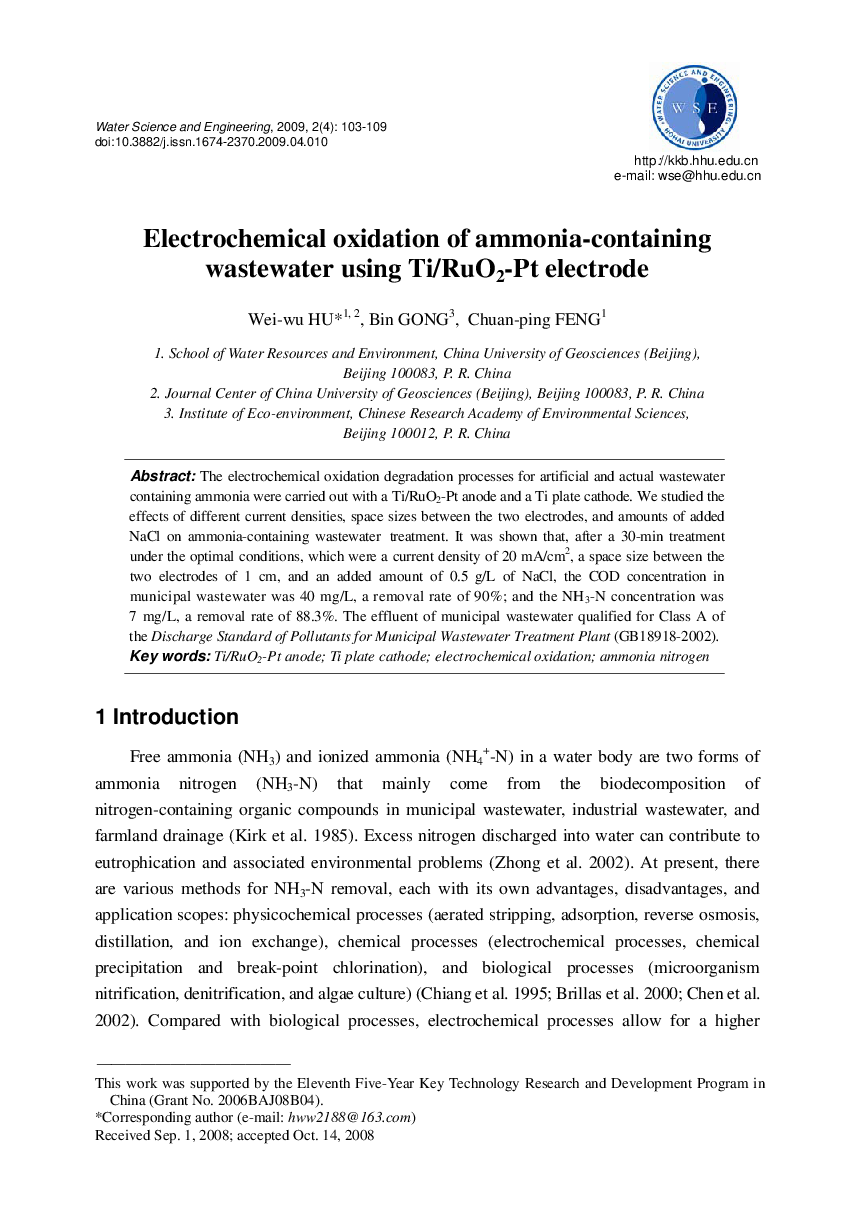| Article ID | Journal | Published Year | Pages | File Type |
|---|---|---|---|---|
| 311501 | Water Science and Engineering | 2009 | 7 Pages |
The electrochemical oxidation degradation processes for artificial and actual wastewater containing ammonia were carried out with a Ti/RuO2-Pt anode and a Ti plate cathode. We studied the effects of different current densities, space sizes between the two electrodes, and amounts of added NaCl on ammonia-containing wastewater treatment. It was shown that, after a 30-min treatment under the optimal conditions, which were a current density of 20 mA/cm2, a space size between the two electrodes of 1 cm, and an added amount of 0.5 g/L of NaCl, the COD concentration in municipal wastewater was 40 mg/L, a removal rate of 90%; and the NH3-N concentration was 7 mg/L, a removal rate of 88.3%. The effluent of municipal wastewater qualified for Class A of the Discharge Standard of Pollutants for Municipal Wastewater Treatment Plant (GB18918-2002).
